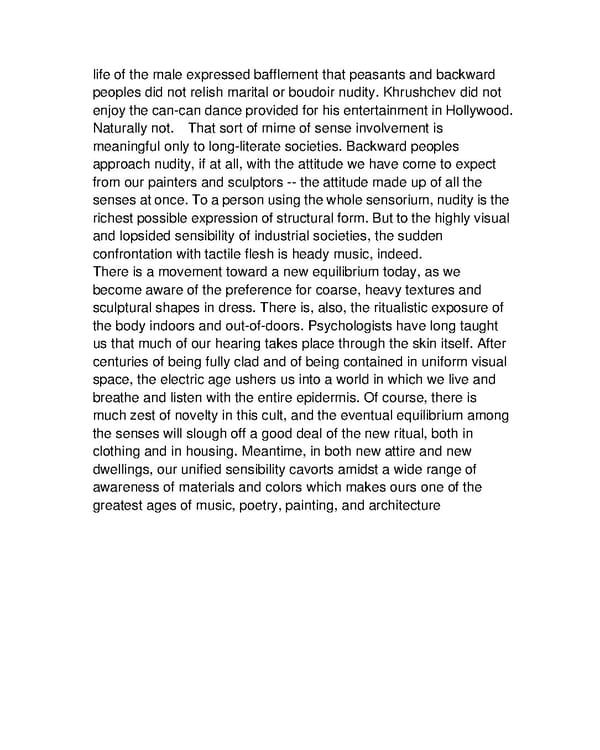life of the male expressed bafflement that peasants and backward peoples did not relish marital or boudoir nudity. Khrushchev did not enjoy the can-can dance provided for his entertainment in Hollywood. Naturally not. That sort of mime of sense involvement is meaningful only to long-literate societies. Backward peoples approach nudity, if at all, with the attitude we have come to expect from our painters and sculptors -- the attitude made up of all the senses at once. To a person using the whole sensorium, nudity is the richest possible expression of structural form. But to the highly visual and lopsided sensibility of industrial societies, the sudden confrontation with tactile flesh is heady music, indeed. There is a movement toward a new equilibrium today, as we become aware of the preference for coarse, heavy textures and sculptural shapes in dress. There is, also, the ritualistic exposure of the body indoors and out-of-doors. Psychologists have long taught us that much of our hearing takes place through the skin itself. After centuries of being fully clad and of being contained in uniform visual space, the electric age ushers us into a world in which we live and breathe and listen with the entire epidermis. Of course, there is much zest of novelty in this cult, and the eventual equilibrium among the senses will slough off a good deal of the new ritual, both in clothing and in housing. Meantime, in both new attire and new dwellings, our unified sensibility cavorts amidst a wide range of awareness of materials and colors which makes ours one of the greatest ages of music, poetry, painting, and architecture
 Understanding Media by Marshall McLuhan Page 136 Page 138
Understanding Media by Marshall McLuhan Page 136 Page 138